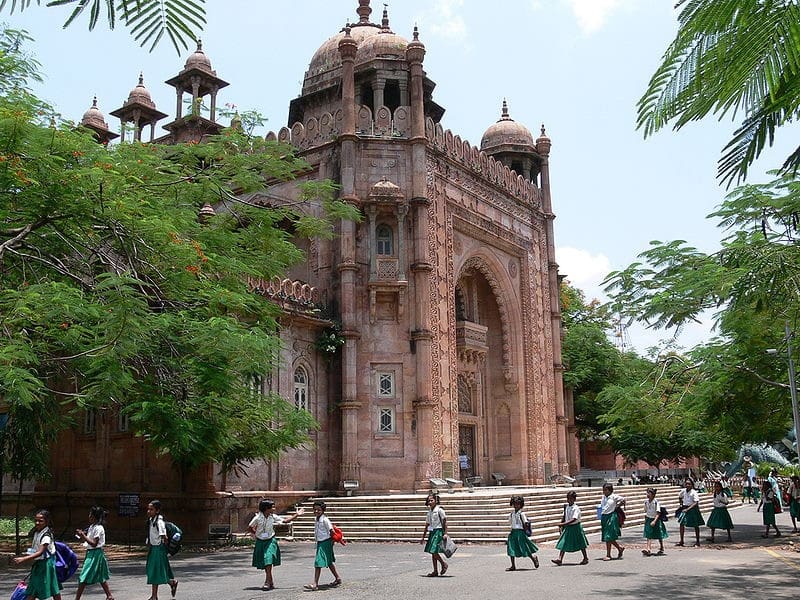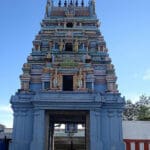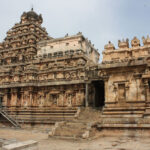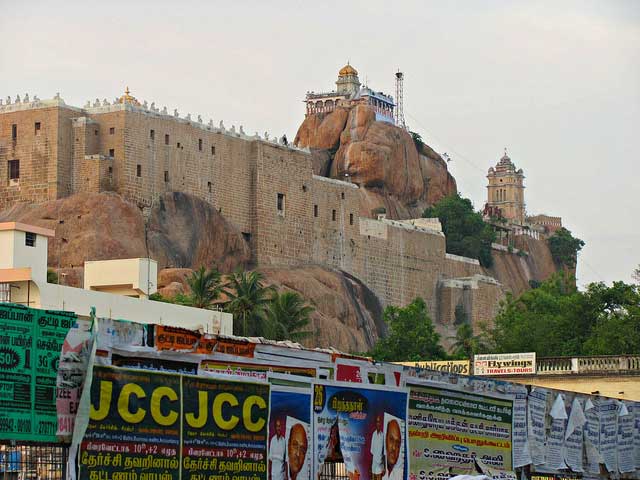The National Art Gallery Chennai stands as one of India’s most prestigious cultural institutions, housing an extraordinary collection of art that spans centuries of artistic expression. Located in the heart of Chennai, Tamil Nadu, this magnificent gallery serves as a beacon for art enthusiasts, historians, and cultural scholars from across the globe. We invite you to explore the rich tapestry of artistic heritage that defines this remarkable institution.
Established as a cornerstone of Chennai’s cultural landscape, the National Art Gallery represents more than just a repository of artworks—it embodies the artistic soul of Tamil Nadu and serves as a bridge between traditional Indian art forms and contemporary artistic expressions. Our comprehensive guide will take you through every aspect of this cultural treasure, from its historical significance to its modern-day relevance in the art world.
Historical Foundation and Architectural Marvel
Origins and Establishment
The National Art Gallery Chennai traces its origins to the British colonial period, when the need for preserving and showcasing Indian artistic heritage became paramount. Founded in 1907, the gallery was initially conceived as part of the Government Museum complex, making it one of the oldest art galleries in India. The institution was established with the vision of creating a space where traditional Indian art could be preserved, studied, and appreciated by future generations.
The gallery’s foundation was laid during a period when Indian art was experiencing a renaissance, with artists and patrons alike recognizing the importance of preserving cultural heritage while embracing new artistic movements. This historical context has shaped the National Art Gallery’s identity as an institution that celebrates both traditional and contemporary art forms.
Architectural Splendor and Design
The architectural design of the National Art Gallery Chennai reflects the Indo-Saracenic style that was popular during the British colonial era. The building’s facade features intricate stonework, ornate arches, and decorative elements that blend Indian and European architectural traditions. The structure itself serves as a work of art, with its imposing entrance, spacious galleries, and carefully planned exhibition spaces that enhance the viewing experience for visitors.
The gallery’s architecture incorporates traditional Tamil architectural elements while maintaining the grandeur befitting a national institution. High ceilings, natural lighting systems, and well-ventilated spaces create an optimal environment for both artwork preservation and visitor comfort. The building’s design philosophy emphasizes the harmony between structure and function, ensuring that the architectural elements complement rather than compete with the artworks on display.
Collections and Artistic Treasures
Traditional Indian Art Collection
The National Art Gallery Chennai houses one of India’s most comprehensive collections of traditional art, spanning multiple centuries and representing diverse artistic traditions from across the Indian subcontinent. The collection includes masterpieces from various schools of Indian painting, sculpture, and decorative arts that provide insight into the rich cultural heritage of the region.
Tanjore Paintings form a significant portion of the gallery’s collection, representing one of the most distinctive art forms of South India. These paintings, characterized by their rich colors, gold leaf work, and religious themes, showcase the artistic sophistication of the Maratha court period. Each Tanjore painting in the collection tells a story, whether depicting Hindu deities, mythological scenes, or royal portraits.
Mysore Paintings represent another jewel in the gallery’s crown, distinguished by their delicate brushwork, muted color palette, and intricate detail. These paintings, which flourished under the patronage of the Mysore rulers, demonstrate the evolution of South Indian painting traditions and their adaptation to changing cultural influences.
The sculpture collection encompasses works spanning from ancient times to the medieval period, including bronze sculptures from the Chola dynasty, stone carvings from various South Indian temples, and wooden sculptures that represent the craftsmanship of traditional artisans. These sculptures not only serve as artistic masterpieces but also provide valuable insights into the religious, social, and cultural practices of their respective periods.
Contemporary Art and Modern Masters
The National Art Gallery Chennai has continuously evolved to include contemporary works that reflect modern artistic sensibilities while maintaining connections to traditional themes. The contemporary collection features works by renowned Indian artists who have shaped the modern art movement in the country.
Raja Ravi Varma’s works occupy a place of honor in the gallery, representing the bridge between traditional Indian themes and European painting techniques. His paintings, which depict scenes from Indian mythology and portraits of Indian royalty, demonstrate the synthesis of Eastern and Western artistic traditions that characterized the late 19th and early 20th centuries.
Modern Indian artists represented in the collection include masters who have contributed to the evolution of Indian art in the post-independence era. These works reflect the changing social, political, and cultural landscape of India while maintaining strong connections to traditional artistic roots.
Folk Art and Tribal Expressions
The gallery’s commitment to preserving diverse artistic traditions extends to its folk art collection, which represents the vibrant and varied folk traditions of Tamil Nadu and other South Indian states. These works, created by anonymous artists from rural communities, provide insight into the daily lives, beliefs, and cultural practices of India’s diverse population.
Kalamkari textiles, palm leaf manuscripts, and traditional crafts form part of this collection, showcasing the skill and creativity of artisans who have preserved these traditions across generations. The folk art collection serves as a reminder of the democratic nature of artistic expression and the importance of preserving cultural diversity.
Educational Programs and Cultural Initiatives
Academic Research and Scholarship
The National Art Gallery Chennai serves as more than just an exhibition space; it functions as a center for academic research and scholarly inquiry into Indian art and culture. The institution collaborates with universities, research institutions, and international museums to promote the study of Indian art and to develop new methodologies for art preservation and interpretation.
Research programs conducted at the gallery focus on various aspects of Indian art history, including iconographic studies, technical analysis of artworks, and documentation of artistic traditions. These research initiatives contribute to the global understanding of Indian artistic heritage and provide valuable resources for scholars and students.
Scholarly publications produced by the gallery include exhibition catalogues, research monographs, and academic papers that disseminate knowledge about the collection and contribute to art historical scholarship. These publications serve as authoritative sources for researchers studying Indian art and culture.
Educational Outreach and Community Engagement
The National Art Gallery’s educational programs are designed to make art accessible to diverse audiences, from school children to adult learners. These programs include guided tours, workshops, lectures, and interactive sessions that help visitors develop a deeper appreciation for art and cultural heritage.
School education programs bring students from across Chennai and Tamil Nadu to the gallery, where they participate in age-appropriate activities designed to enhance their understanding of art and culture. These programs often include hands-on workshops where students can try traditional art techniques and learn about different artistic mediums.
Adult education initiatives cater to lifelong learners who wish to deepen their knowledge of art and culture. These programs include lecture series, symposiums, and specialized courses that explore various aspects of Indian art history and contemporary artistic practices.
Conservation and Preservation Efforts
The conservation department of the National Art Gallery Chennai employs state-of-the-art techniques to preserve and restore artworks in the collection. The conservation team includes specialists trained in various aspects of art preservation, from painting conservation to textile restoration and sculpture maintenance.
Preventive conservation measures implemented at the gallery include climate control systems, specialized lighting, and security measures designed to protect artworks from environmental damage and human interference. These measures ensure that the collection remains accessible to future generations while maintaining the integrity of individual artworks.
Restoration projects undertaken by the gallery have helped preserve important cultural artifacts that might otherwise have been lost to time and deterioration. These projects often involve collaboration with international conservation experts and the use of advanced scientific techniques to analyze and treat artworks.
Visitor Experience and Gallery Services
Exhibition Spaces and Gallery Layout
The National Art Gallery Chennai features multiple exhibition spaces designed to accommodate different types of artworks and provide optimal viewing conditions for visitors. The permanent galleries house the core collection, while temporary exhibition spaces allow for special displays, traveling exhibitions, and contemporary art showcases.
Permanent galleries are organized thematically and chronologically, allowing visitors to follow the evolution of Indian art through different periods and styles. Each gallery is equipped with appropriate lighting, climate control, and security systems to ensure the preservation of artworks while providing an enjoyable viewing experience.
Special exhibition spaces host rotating displays that explore specific themes, artistic movements, or individual artists. These exhibitions often feature works borrowed from other institutions or private collections, providing visitors with opportunities to see rare and significant artworks that might not otherwise be accessible.
Visitor Amenities and Services
The National Art Gallery provides comprehensive visitor services designed to enhance the museum experience and ensure accessibility for all visitors. These services include guided tours, audio guides, educational materials, and accessibility accommodations for visitors with special needs.
Guided tours are available in multiple languages and are conducted by trained docents who provide insights into the collection and help visitors understand the historical and cultural context of the artworks. Specialized tours are available for different age groups and interests, including family tours, student group visits, and expert-led tours for art enthusiasts.
Audio guide systems allow visitors to explore the collection at their own pace while receiving detailed information about individual artworks and artistic movements. These guides are available in multiple languages and include special content for children and families.
Museum Shop and Cultural Resources
The museum shop at the National Art Gallery offers visitors the opportunity to take home reproductions of artworks, books about Indian art and culture, and handcrafted items created by local artisans. The shop serves as an extension of the educational mission of the gallery, providing resources that allow visitors to continue their exploration of Indian art and culture at home.
Books and publications available at the shop include exhibition catalogues, art history books, and children’s books about Indian art and culture. These materials serve as valuable resources for students, researchers, and art enthusiasts who wish to deepen their knowledge of the subjects explored in the gallery.
Handcrafted items sold at the shop support local artisans and traditional craft traditions while providing visitors with authentic examples of Indian decorative arts. These items include textiles, jewelry, sculpture, and other objects that reflect the continuing vitality of Indian artistic traditions.
Cultural Significance and Regional Impact
Role in Tamil Nadu’s Cultural Landscape
The National Art Gallery Chennai plays a crucial role in preserving and promoting the cultural heritage of Tamil Nadu, serving as a repository for artistic traditions that define the region’s identity. The gallery’s collection reflects the rich artistic heritage of Tamil Nadu, from ancient temple sculptures to contemporary works by Tamil artists.
Tamil artistic traditions represented in the collection include classical dance sculptures, temple bronze work, and traditional painting styles that have evolved over centuries. These works provide insight into the cultural values, religious beliefs, and artistic sensibilities that have shaped Tamil society throughout its history.
Contemporary Tamil artists find support and recognition through the gallery’s programs and exhibitions, which provide platforms for emerging talents and help maintain the vitality of artistic traditions in the modern era. The gallery serves as a bridge between traditional art forms and contemporary artistic expressions, ensuring the continuity of cultural heritage while embracing innovation and change.
National and International Recognition
The National Art Gallery Chennai has gained recognition as one of India’s premier cultural institutions, attracting visitors from across the country and around the world. The gallery’s reputation for excellence in collection management, conservation, and public programming has established it as a model for other cultural institutions in India and internationally.
International collaborations undertaken by the gallery include exchange programs with museums worldwide, collaborative research projects, and traveling exhibitions that showcase Indian art to global audiences. These partnerships help promote understanding of Indian culture and contribute to international dialogue about art and cultural heritage.
Professional recognition from museum organizations, art historians, and cultural institutions has established the gallery’s reputation as a center of excellence in the museum field. This recognition attracts scholars, curators, and art professionals who contribute to the gallery’s research and educational programs.
Planning Your Visit to the National Art Gallery Chennai
Practical Information for Visitors
Visiting the National Art Gallery Chennai requires some advance planning to make the most of your experience. The gallery is open to the public throughout the week, with specific hours that may vary depending on the season and special events. We recommend checking the official website or contacting the gallery directly for current hours and any special exhibition information.
Admission fees for the National Art Gallery are modest, reflecting the institution’s commitment to making art accessible to all segments of society. Special rates are available for students, senior citizens, and groups, while children under a certain age may be admitted free of charge.
Location and accessibility information is important for planning your visit. The gallery is located in the Egmore area of Chennai, easily accessible by public transportation, taxi, or private vehicle. The building is designed to accommodate visitors with mobility challenges, with ramps, elevators, and accessible restrooms available throughout the facility.
Best Times to Visit and Special Events
The National Art Gallery Chennai offers different experiences depending on when you visit, with certain times of year featuring special exhibitions, cultural events, or educational programs that enhance the standard gallery experience.
Seasonal exhibitions often coincide with major cultural festivals or anniversaries, providing visitors with opportunities to see special displays or participate in cultural celebrations. These events may include artist demonstrations, cultural performances, or special lectures that provide additional context for the gallery’s collections.
Weekday visits typically offer a quieter, more contemplative experience, while weekend visits may include special family programs or guided tours designed for different audiences. School groups often visit during weekday mornings, while individual visitors may prefer afternoon hours for a more leisurely exploration of the galleries.
Photography and Documentation
Photography policies at the National Art Gallery Chennai are designed to balance the desire of visitors to document their experience with the need to preserve artworks and maintain an appropriate gallery atmosphere. Non-flash photography may be permitted in certain areas, while restrictions may apply to special exhibitions or particularly sensitive artworks.
Social media sharing is encouraged as a way to promote the gallery and its collections, though visitors are asked to be respectful of other visitors and to follow posted guidelines regarding photography and social media use within the gallery spaces.
Future Developments and Vision
Expansion and Modernization Plans
The National Art Gallery Chennai continues to evolve and expand its services and facilities to meet the changing needs of visitors and the art community. Future development plans include expansion of exhibition spaces, modernization of climate control and security systems, and enhancement of educational and research facilities.
Digital initiatives planned for the gallery include online collections databases, virtual exhibition spaces, and digital educational resources that will make the collection more accessible to audiences who cannot visit in person. These digital resources will complement the physical gallery experience and extend the institution’s reach to global audiences.
Conservation laboratory upgrades will enhance the gallery’s ability to preserve and restore artworks in the collection, ensuring that these cultural treasures remain accessible to future generations. These upgrades will include state-of-the-art equipment for scientific analysis of artworks and advanced treatment capabilities for various types of artistic media.
Community Partnerships and Collaborations
The National Art Gallery’s future vision includes expanded partnerships with educational institutions, cultural organizations, and community groups to broaden its impact and reach within Tamil Nadu and beyond. These partnerships will create new opportunities for collaboration in research, education, and public programming.
Artist residency programs under development will provide opportunities for contemporary artists to work within the gallery environment, creating new works inspired by the collection and contributing to the ongoing dialogue between traditional and contemporary artistic expressions.
International exchange programs will continue to expand, bringing foreign exhibitions to Chennai while sharing the gallery’s collection with international audiences through traveling exhibitions and digital initiatives.
The National Art Gallery Chennai: A Living Cultural Institution
Continuing Relevance in the Modern Era
The National Art Gallery Chennai remains relevant in the contemporary cultural landscape by maintaining its commitment to both preservation and innovation. The institution recognizes that cultural heritage is not static but evolves through ongoing interpretation, education, and creative engagement with new audiences.
Contemporary relevance is maintained through programming that connects historical artworks with current social, political, and cultural issues, helping visitors understand how artistic traditions continue to inform and inspire contemporary life. The gallery serves as a space for dialogue between past and present, tradition and innovation.
Cultural bridge-building remains a central mission of the gallery, as it works to connect diverse communities through shared appreciation of artistic heritage. The institution welcomes visitors from all backgrounds and provides resources and programs that make art accessible and meaningful to everyone.
Legacy and Future Generations
The National Art Gallery Chennai represents more than a century of dedication to preserving and sharing India’s artistic heritage. The institution’s legacy includes the countless artists, scholars, curators, and visitors who have contributed to its development and continue to benefit from its resources and programs.
Educational impact extends far beyond the walls of the gallery, as the institution’s programs and resources have influenced generations of artists, scholars, and art lovers. The gallery’s commitment to education ensures that its impact will continue to grow as new generations discover the richness of Indian artistic heritage.
Preservation mission remains at the heart of the gallery’s work, ensuring that the artistic treasures in its collection will be available for study, appreciation, and inspiration for centuries to come. The institution’s professional standards in conservation and collection management serve as a model for cultural preservation efforts throughout India and beyond.
The National Art Gallery Chennai stands as a testament to the enduring power of art to inspire, educate, and unite people across cultural and temporal boundaries. As we look to the future, this remarkable institution continues to evolve while maintaining its essential character as a guardian of India’s artistic heritage and a beacon for cultural understanding and appreciation.
Frequently Asked Questions (FAQs)
1. What are the opening hours of the National Art Gallery Chennai?
The National Art Gallery Chennai is typically open from 9:30 AM to 5:00 PM on all days except Fridays and national holidays. However, we recommend checking the official website or calling ahead to confirm current hours, as they may vary during special exhibitions or cultural events. The gallery may also have extended hours during certain festivals or special occasions.
2. How much is the admission fee for the National Art Gallery Chennai?
The admission fee for the National Art Gallery Chennai is quite reasonable, typically ranging from ₹10-20 for Indian citizens and slightly higher for foreign visitors. Students with valid ID cards and senior citizens often receive discounted rates. Children under 5 years of age are usually admitted free of charge. Group discounts may be available for educational institutions and tour groups.
3. Are guided tours available at the National Art Gallery Chennai?
Yes, guided tours are available at the National Art Gallery Chennai and are highly recommended for first-time visitors. Tours are typically conducted in English, Tamil, and Hindi, with advance booking recommended for specialized tours. Private group tours can be arranged for educational institutions, corporate groups, or special interest groups with prior notice.
4. Is photography allowed inside the National Art Gallery Chennai?
Photography policies at the National Art Gallery Chennai may vary depending on the specific exhibition and type of artwork. Generally, non-flash photography for personal use is permitted in certain areas, but restrictions may apply to temporary exhibitions or sensitive artworks. Professional photography and videography require special permits and advance approval from the gallery administration.
5. How can I reach the National Art Gallery Chennai by public transportation?
The National Art Gallery Chennai is conveniently located in the Egmore area and is easily accessible by various modes of public transportation. The nearest railway station is Egmore, which is within walking distance. Local buses, metro rail, and auto-rickshaws provide convenient access to the gallery. The facility also offers limited parking for visitors arriving by private vehicle.
6. Does the National Art Gallery Chennai have facilities for disabled visitors?
Yes, the National Art Gallery Chennai is committed to accessibility and provides facilities for visitors with disabilities. The building includes wheelchair-accessible entrances, ramps, elevators, and accessible restrooms. Audio guides and special tours can be arranged for visitors with visual or hearing impairments with advance notice.
7. Are there educational programs for children at the National Art Gallery Chennai?
The National Art Gallery Chennai offers comprehensive educational programs specifically designed for children of different age groups. These programs include interactive workshops, art-making activities, storytelling sessions, and special guided tours that make art history engaging and accessible for young visitors. School groups can book educational visits that align with curriculum requirements.
8. Can I purchase reproductions or souvenirs at the National Art Gallery Chennai?
Yes, the National Art Gallery Chennai has a museum shop that offers a wide range of items including high-quality reproductions of artworks from the collection, books on Indian art and culture, postcards, and handcrafted items by local artisans. The shop supports the gallery’s educational mission while providing visitors with meaningful mementos of their visit.
9. Does the National Art Gallery Chennai host temporary exhibitions?
The National Art Gallery Chennai regularly hosts temporary exhibitions featuring works from other institutions, private collections, or thematic displays that complement the permanent collection. These special exhibitions often focus on specific artists, artistic movements, or cultural themes and provide visitors with opportunities to see rare or significant artworks not normally on display.
10. How can I support the National Art Gallery Chennai?
There are several ways to support the National Art Gallery Chennai, including becoming a member, making donations, volunteering for educational programs, or participating in fundraising events. The gallery also welcomes corporate partnerships, sponsorships for special exhibitions, and donations of artworks or funds for conservation projects. Information about support opportunities is available through the gallery’s administration office.





















